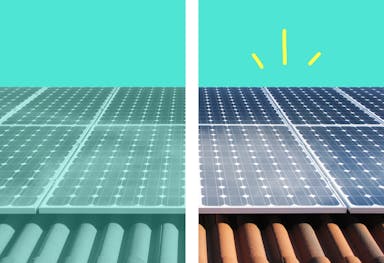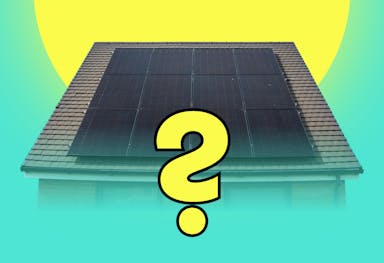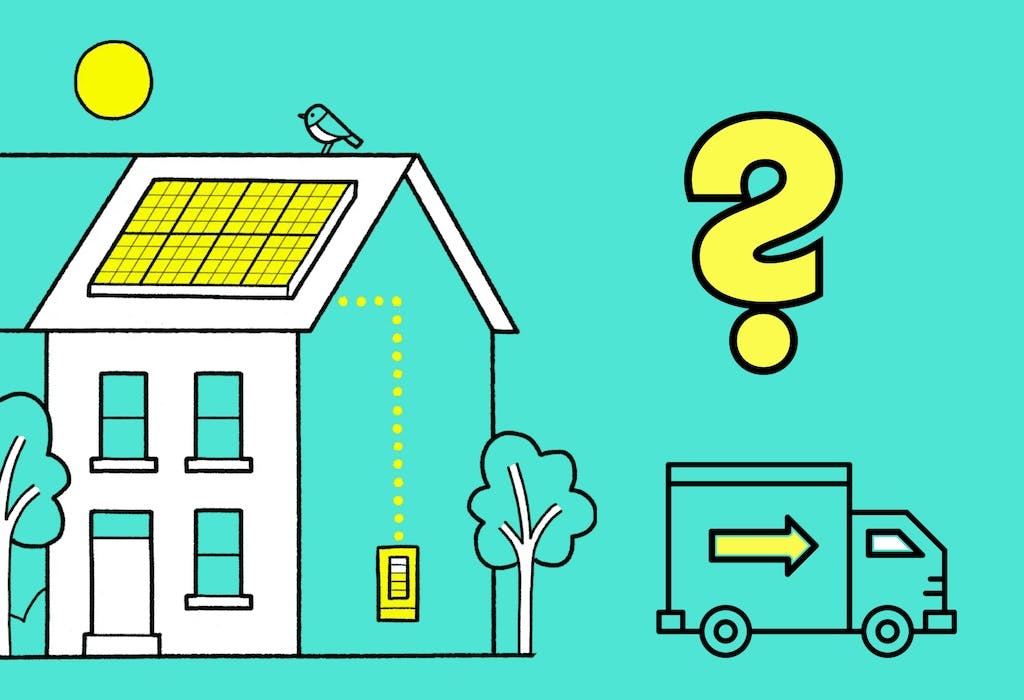- Solar advice hub
- Sunsave-plus
- The rise of solar subscriptions around the world
The rise of solar subscriptions around the world
Here are examples of solar subscriptions from all over the world, the services they offer, and how successful they’ve been.


Why you can trust our content
We know that the solar industry is full of misinformation, but we only use reliable sources, including:
- Our experienced solar experts, installers and system designers
- Our own database of solar & battery system designs
- Authoritative bodies like MCS and the UK government



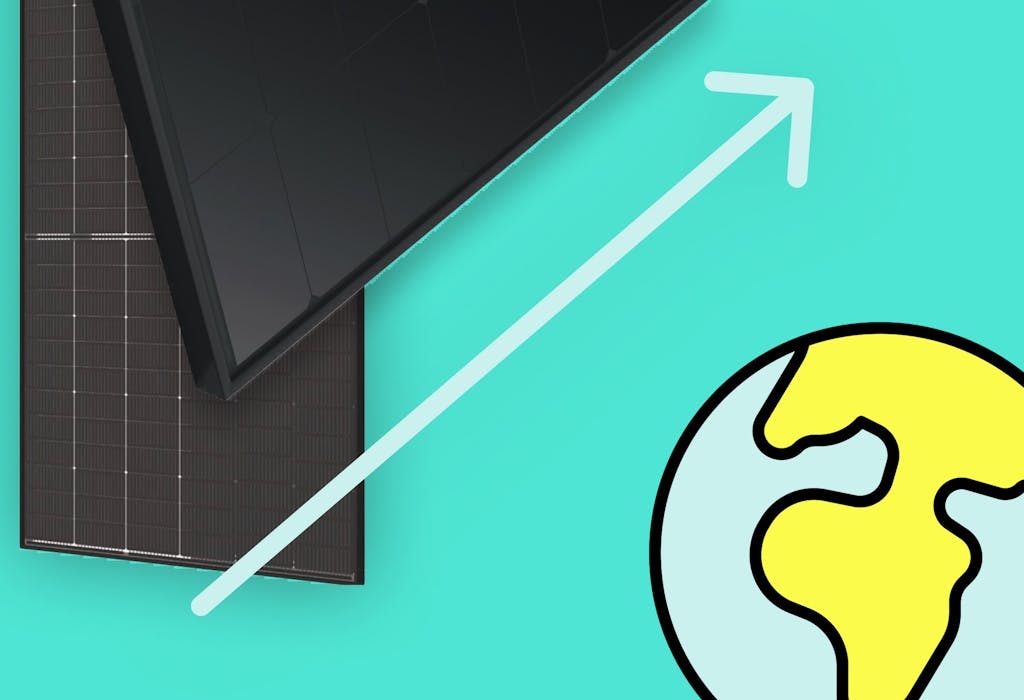
Calculate savings
What kind of home do you live in?
Calculate savings
What kind of home do you live in?
Solar subscriptions: at a glance
Solar subscriptions are a relatively new concept, but around a million households across the world have already jumped on board.
It’s easy to see why: the cost of a solar installation is high, and the quality of maintenance support from traditional installers has generally been insufficient.
Solar subscriptions offer a revolutionary alternative, giving people the opportunity to switch to solar with no upfront cost and have all of their maintenance concerns handled by experts.
In this article, we’ll run through a few examples of solar subscriptions in different countries, what services they offer, and how successful they’ve been.
And if you’re wondering how much you could save with a Sunsave Plus solar & battery system, enter a few details below and we’ll provide an estimate.
Find out how much you can save
What kind of home do you live in?
How popular are solar subscriptions in other countries?
Solar subscriptions are becoming increasingly popular, with companies launching different versions across the world in recent years.
This is due to the high upfront cost of solar panel systems, which is still the main barrier stopping people from making the switch, even after decades of hardware and installation costs falling.
For example, 69% of people in the UK think the initial expense is too much for them to go solar, according to a 2025 survey by Utilita Energy of 2,000 homeowners.
And this issue exists all over the world, with households unable to access the benefits of a solar & battery system because of the hefty price.
Here are some examples of solar subscriptions from across the globe.
Sunrun, US
3.8% of homes in the US have solar installations, according to our analysis of government and industry data.
That means 96.2% haven’t switched to solar, which equates to 127 million households missing out on its many benefits.
Sunrun was founded in 2007, and – appropriately for a solar company – has its headquarters in sunny San Francisco, California.
The largest installer of residential solar panels in the US now has more than 900,000 subscribers in 22 states , plus Washington DC and Puerto Rico, and keeps growing.
These subscribers have over 6.4GW of solar panels on their rooftops, which is more than the UK’s entire domestic solar capacity.
The Sunrun Subscription Plan involves customers leasing solar panels for no upfront cost, and instead committing to a fixed monthly payment plan.
Any electricity the panels produce is the customer’s to use, but Sunrun will own the panels throughout the contract term. The company will also monitor the system and take care of any maintenance and repairs for free.
The subscription model is clearly growing in popularity in the States: in the first quarter of 2025, more than 50% of new installations were funded via subscription (as opposed to cash/loan financing), according to a report published by Sunrun.
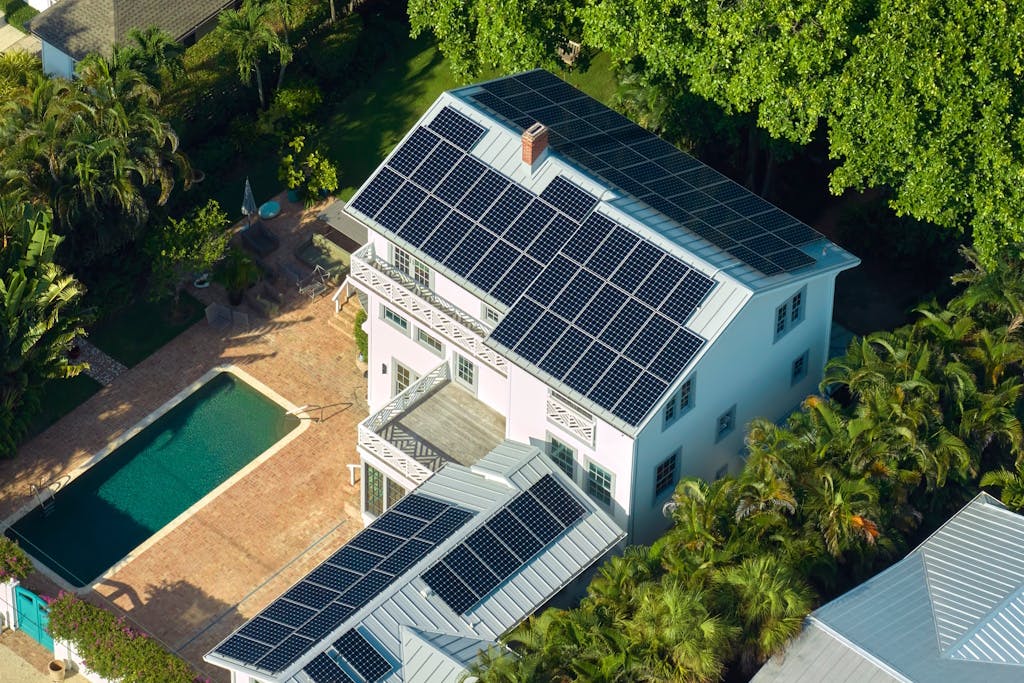
Enpal, Germany
10.9% of homes in Germany have gone solar, based on our analysis of government data.
This is a far higher percentage than the US’s residential solar market has reached, but it still leaves nearly nine in every 10 German households without the ability to generate solar energy.
Many of these homes could embrace solar if they didn’t have to pay anything upfront – which is a service Enpal offers.
The Berlin-based company launched in 2017, and now has more than 90,000 customers.
In a similar way to Sunrun, households can go solar with no upfront cost, and instead lease their panels from Enpal for fixed monthly payments over 20 years. At the end of the contract, customers can buy the system for €1.
Homes can use all the electricity their panels produce, and benefit from selling their excess electricity to the grid. New Enpal customers can currently enjoy a fixed export rate of 16.4 cents per kilowatt-hour (kWh) for two years.
As well as solar & battery systems, Enpal also offers plans including EV chargers and heat pumps.
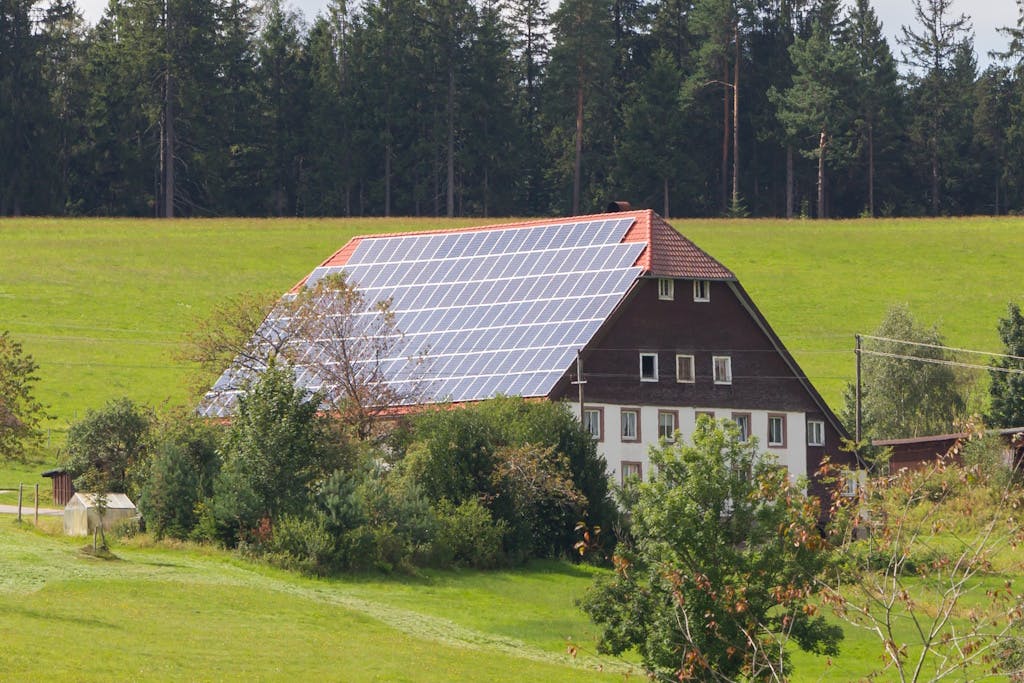
Otovo, Europe
Otovo was founded in Oslo in 2016, and now operates all over Europe.
The Norwegian company offers its subscription service in 13 countries across the continent, from Portugal to Poland – including the UK.
Otovo has carried out 30,000 residential installations and attained 6,000 subscription customers , as of March 2024.
Subscribed households won’t own their solar installations until the end of their contract, but they will receive long-term workmanship and product warranties.
Solar panels are covered for 20 years, and batteries are under warranty for 10 years – with any replacements during these time periods provided for free.
Solarmente, Spain
Only 2.2% of Spanish households have switched to solar, according to our analysis of government data.
This is extremely low, considering the solar savings you can make in sunny Spain – which would be surprising, if it weren’t for the so-called ‘sun tax’.
The regulation, which was in force between 2015 and 2019, compelled solar households to pay a tax on every kWh their panels produced, and to give their excess electricity to the grid for free. This made it much less financially attractive to go solar.
As the ‘sun tax’ ended, SolarMente launched in Barcelona, ready to provide an easier way for many Spanish homes to go solar. Homeowners can rent a system for a monthly fee, with installation and maintenance costs included.
Subscribers can use any excess electricity their panels produce to lower their energy bills, or – in an unusual twist – they can send it to their second home, business, or loved ones.
And if a customer sells their home, they can take their system with them, or the buyer can purchase the system at a discounted rate. The company says its solar installations can increase a property’s value by 3.5%.
Locals have bought into the model. SolarMente now registers around 100 new solar subscriptions per month , and Dutch CEO Wouter Draijier told Euronews that the company is available in “every corner of Spain – including the islands.”
It’s added EV chargers and heat pumps to its product list, raised €50 million (£43 million) in debt and equity, and in 2024, it attracted investment from Academy Award-winning actor Leonardo DiCaprio.
Speaking to Sifted, Draijier said the company is also aiming to expand into France, Italy, and Portugal.
Wetility, South Africa
126,000 homes in South Africa have solar panels , and this number is rising, as people use the technology to evade frequent scheduled power cuts and reduce their energy bills.
It still equates to just 0.7% of the country’s 19 million households, though.
Wetility is attempting to accelerate this trend with its solar subscription, which allows homes to lease a solar & battery system with no upfront cost.
In return for a monthly payment, Wetility households will also receive an annual maintenance check, and the ability to buy their system at any point during the lease term, with no penalties.
The company, which was founded in 2019, operates in a northern area of Johannesburg called Sandton.
It raised 903 million rand (£38 million) in 2023 , in an investment round led by broadcaster MultiChoice, before adding 500 million rand (£21 million) of funding in 2025, thanks to South African investment firm Jaltech.
Wetility’s solar products are all designed to keep supplying homes with electricity during power cuts, while their installations address customers’ fears of theft, with the inverter and battery stored in a 300kg steel box that’s bolted to a wall.
CEO Vincent Maposa told BBC News that his company’s solar panels are also protected against thieves, saying: “We came up with a thin-film panel that sticks onto the roof. If someone tries to peel it off, it tears and becomes valueless.
“That was important for areas where theft is a concern. In terms of efficiency, they perform about as well as traditional panels."
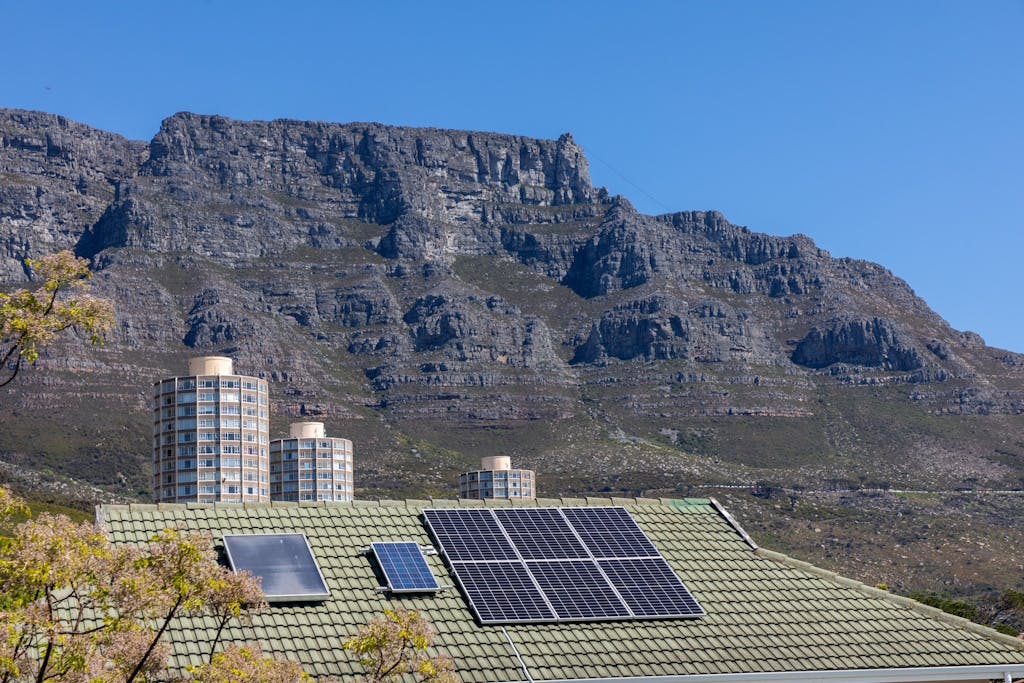
iO Energy, Australia
A huge 38.8% of Australian homes have switched to solar, based on our analysis of government data.
This figure is even more impressive considering the country’s residential solar industry took off at the same time as the UK’s, in 2010 – and it helps Australia to generate the most solar electricity per person of any nation in the world.
iO Energy isn’t satisfied with that, though. The Adelaide-based company calls on its customers to “help us to get Australia to 100% renewable energy as fast as possible!”
The firm, which launched in 2020, is both an energy supplier and solar subscription company. This allows it to offer time-of-use tariffs that are perfect for solar homes.
Its subscription service also comes with the promise that it’ll repair or replace the products for free if they ever break – and after 10 years, iO Energy will offer customers a complete equipment refresh, again at no cost.
Looking ahead
Solar subscriptions are proven to work in countries across four continents, from the US to Australia.
They allow millions more households to go solar and reduce their energy bills, by removing the main barrier to solar adoption: the high upfront cost.
Another benefit is that solar subscription companies will generally take care of a system’s maintenance needs – and may even replace deteriorated parts for free.
This is an attractive proposition for households across the world that struggle with their energy bills, can’t spare a large chunk of money to go solar, don’t want to add solar & battery system management to their list of responsibilities – or all of the above.
These advantages mean solar subscriptions are likely to spread to new countries in the near future – in fact, some of the firms we’ve covered already have plans to do so.
Our solar subscription, Sunsave Plus, is a great way for UK households to soften the impact of costly energy bills, which are expected to stay high until the late 2030s.
If you’re wondering how much you could save with a Sunsave Plus solar & battery system, enter a few details below and we’ll provide an estimate.
Find out how much you can save
What kind of home do you live in?
FAQs
Related articles

Written byJosh Jackman
Josh has written about the rapid rise of home solar for the past six years. His data-driven work has been featured in United Nations and World Health Organisation documents, as well as publications including The Eco Experts, Financial Times, The Independent, The Telegraph, The Times, and The Sun. Josh has also been interviewed as a renewables expert on BBC One’s Rip-Off Britain, ITV1’s Tonight show, and BBC Radio 4 and 5.


